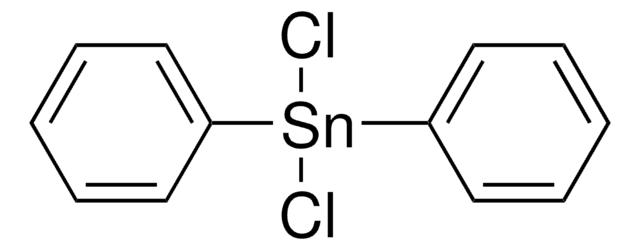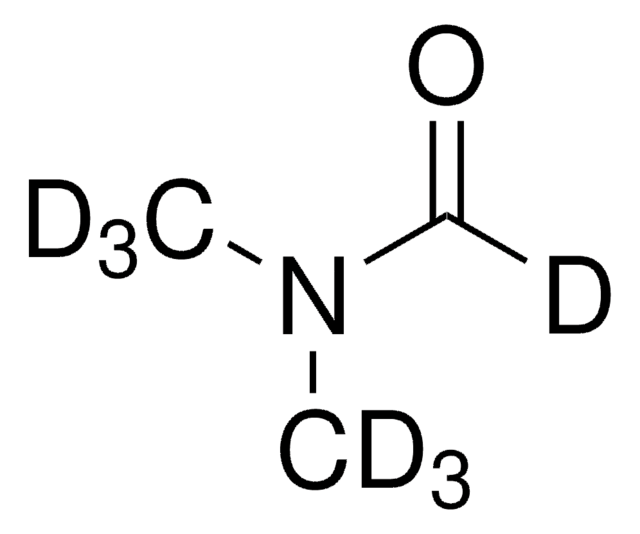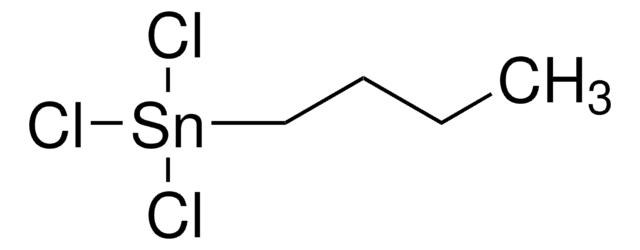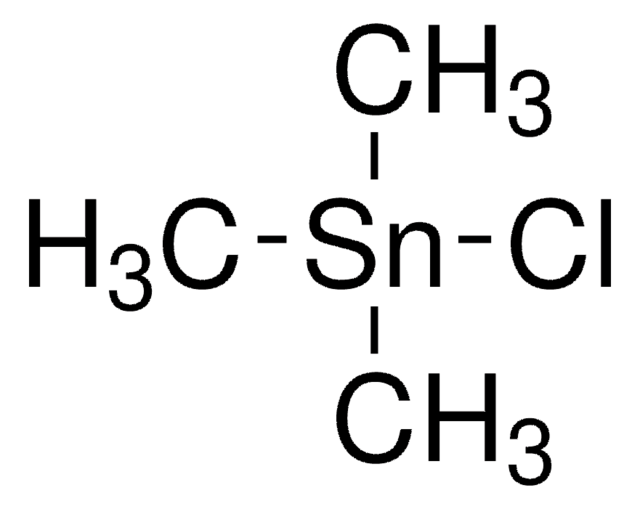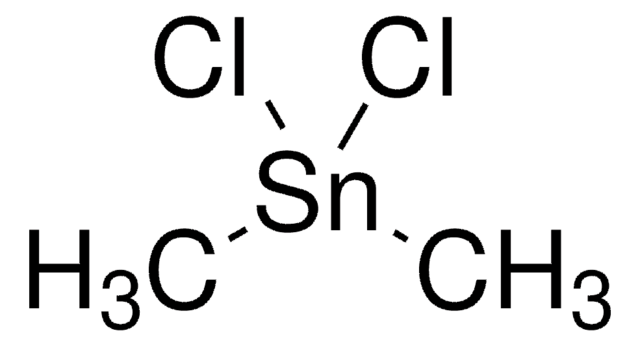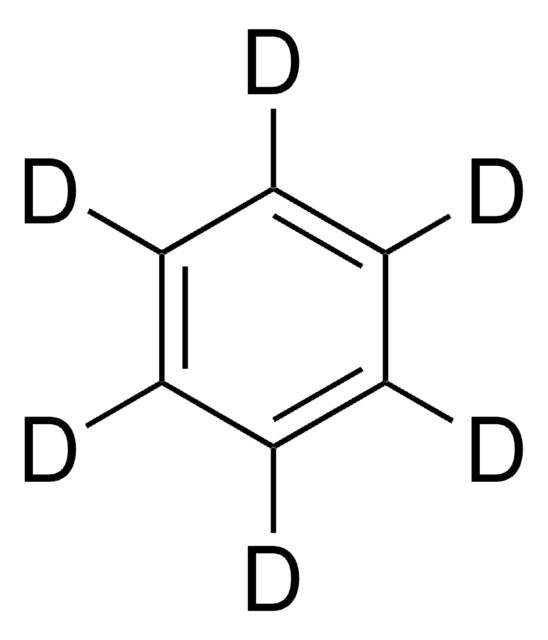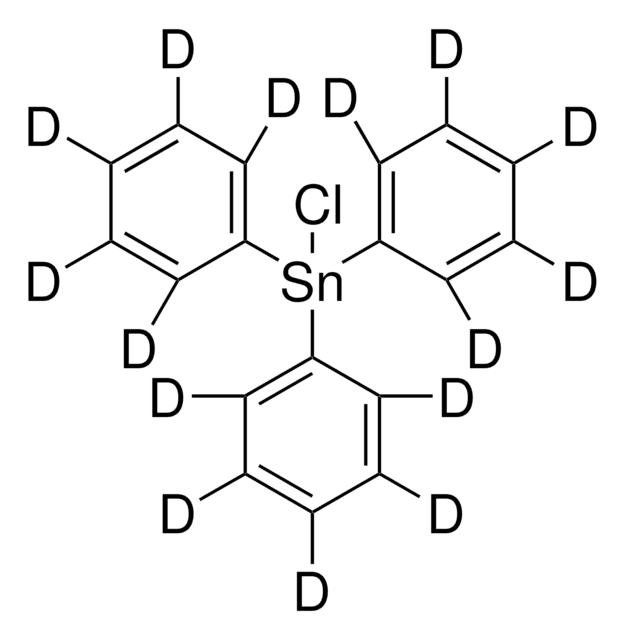277231
Phenyltin trichloride
98%
Sinonimo/i:
Trichlorophenylstannane
About This Item
Prodotti consigliati
Livello qualitativo
Saggio
98%
Stato
liquid
Indice di rifrazione
n20/D 1.585 (lit.)
P. ebollizione
142-143 °C/25 mmHg (lit.)
Densità
1.839 g/mL at 25 °C (lit.)
Stringa SMILE
Cl[Sn](Cl)(Cl)c1ccccc1
InChI
1S/C6H5.3ClH.Sn/c1-2-4-6-5-3-1;;;;/h1-5H;3*1H;/q;;;;+3/p-3
UBOGEXSQACVGEC-UHFFFAOYSA-K
Categorie correlate
Applicazioni
- In the preparation of organotin(IV) complexes as potent antimicrobial agents.
- As a reactant in the Stille coupling reaction catalyzed by peptide-templated Pd nanoparticles.
- As a tin (Sn) source in the synthesis of tin-doped TiO2 photoanodes applicable in dye-sensitized solar cells.
Avvertenze
Danger
Indicazioni di pericolo
Classi di pericolo
Aquatic Acute 1 - Eye Dam. 1 - Skin Corr. 1B
Codice della classe di stoccaggio
8A - Combustible corrosive hazardous materials
Classe di pericolosità dell'acqua (WGK)
WGK 3
Punto d’infiammabilità (°F)
235.4 °F - closed cup
Punto d’infiammabilità (°C)
113 °C - closed cup
Dispositivi di protezione individuale
Faceshields, Gloves, Goggles, type ABEK (EN14387) respirator filter
Scegli una delle versioni più recenti:
Possiedi già questo prodotto?
I documenti relativi ai prodotti acquistati recentemente sono disponibili nell’Archivio dei documenti.
I clienti hanno visto anche
Il team dei nostri ricercatori vanta grande esperienza in tutte le aree della ricerca quali Life Science, scienza dei materiali, sintesi chimica, cromatografia, discipline analitiche, ecc..
Contatta l'Assistenza Tecnica.